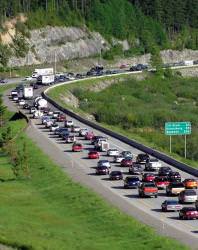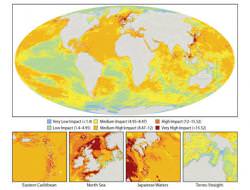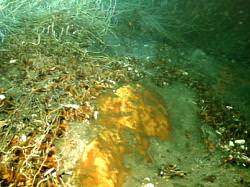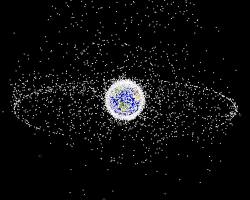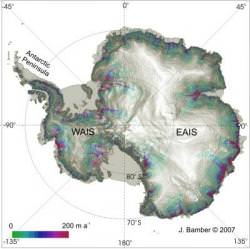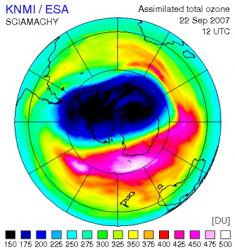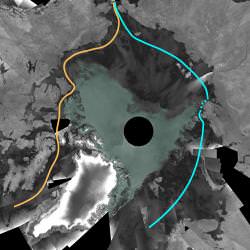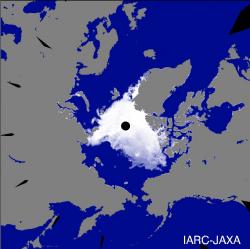Cancer is a mysterious and complicated disease, with many different types and causes. Researchers are still trying to track down all of the environmental effects that can lead to the disease, as anything from what someone eats to where they live determines the probability of developing cancer. A paper published in 2007 in the International Journal of Astrobiology looked at data for cancer deaths from around the world for the past 140 years, and found a strong correlation between rises in cancer deaths and the variation over time in the amount of galactic cosmic rays we encounter here on Earth.
In a paper titled, Correlation of a 140-year global time signature in cancer mortality birth cohorts with galactic cosmic ray variation by Dr. David A. Juckett from the Barros Research Institute at Michigan State University, he showed that the amount of deaths due to cancer on a global scale was higher when the background cosmic rays originating from outside the Solar System were more numerous.
The study looked at available cancer death data from the United States, United Kingdom, Australia, Canada and New Zealand for the past 100-140 years. These data were compared with the amount of variations in galactic cosmic rays during the same period, taken from analysis of ice core samples from Greenland and Antarctica.
Dr. Juckett showed that as the amount of cosmic ray activity increased, the number of people who died from cancer was also higher. There are two peaks in cosmic ray activity during this point, around 1800 and 1900, and a low point around 1860. The total deaths due to cancer were highest, though, around 1830 and 1930, and lowest in the 1890’s.
There is a 28-year lag between the increased presence of cosmic rays and the increase in cancer deaths. It’s not so simple as a person being exposed to cosmic rays and then developing cancer immediately afterwards. What is called the “grandmother effect” comes into play; the cosmic rays actually damage the germ cells of one’s parent while that parent is still in the grandmother’s womb.
“The grandmother would have to be exposed to radiation – which she is all the time – while she is pregnant with the mother of the affected individual. What this is basically implying is that, during a sensitive time in pregnancy, the constant background radiation may cause a chemical change in just the right cell and DNA stretch to lead to future cancer. The background radiation is causing very low level damage all the time to random cells in the body, but anything significant happening to germ cells would lead to a whole organism eventually carrying that damage (or predisposition),” said Dr. Juckett.
So, the parent is exposed to cosmic rays while the fetus is still developing, and this damage then emerges as cancer in child, but is not passed down further.
Galactic cosmic rays consist of high-energy radiation, and are composed primarily of high-energy protons and atomic nuclei. Their origin in not fully understood, but are thought to possibly come from supernovae, active galactic nuclei, quasars and/or gamma ray bursts.
There are several factors that may contribute to the flux of cosmic rays, and they may produce showers of secondary particles that penetrate and impact the Earth’s atmosphere and sometimes reach the surface.
In the study, the researchers found the trend between cosmic ray increase and cancer death increase was a global effect, but there are places on the Earth where the magnetosphere blocks more of the cosmic rays than others. At about 10°N of the equator, fewer cosmic rays get through than elsewhere on the Earth because of the way the Earth’s magnetosphere blocks energetic particles.
People in more northern and southern latitudes are exposed to more of this radiation, thus the rates of cancer death were higher in these regions than near the equator. On average, the oscillation in cancer deaths was between 10-15% during the period of the study.
Any good scientist will tell you that correlation does not necessarily mean causation; the increase in cosmic rays matches well the increase in cancer deaths over this time period, but there could yet be other reasons for this increase.
Dr. Juckett cautions, “Of course, other explanations could be hypothesized. Standard epidemiological approaches would partition individual cases by risk factors (e.g., smoking, environment pollution, diet, age-at-menarche, family history, etc.). Only when there is no correlation to these would other hypotheses, like cosmic rays be entertained. Unfortunately, to look at the 100-yr data for long-term trends, this kind of information is generally not available. The one thing that seems certain is that the common oscillations in the US, UK, CA, NZ, and AU data suggest a global environmental signal of some kind. This does limit things a bit (e.g., solar radiation effects, cosmic ray effects, global pollution).”
The effects that cosmic rays and other types of radiation have on human beings are important to study, as we venture outside the protective magnetic field of the Earth into space. The researchers said that “this effect has profound implications for evolution, long-distance space travel and the colonization of planets with high background radiation.” Long journeys in space would expose astronauts to this same type of radiation for long periods of time, so taking precautions to protect them makes good sense.
What can one do to protect themselves from this type of radiation here on Earth?
“I cannot of think of anything one can do to protect themselves from their inherited propensities. However, cancer is a multi-step process. It still requires other random ‘mutations’ to occur during life. Healthy living is still called for. In other words, reducing exposure to toxins, radiation, and injury. Eventually, the biochemical fingerprints of possible inherited changes may be deciphered and then testing could be possible,” said Dr. Juckett.
There is no cause for alarm, though; cosmic rays are only about 20-30% of the background radiation we are exposed to every day, and are a minimal cause of cancer in comparison to other environmental effects such as smoking.
Original Source: International Journal of Astrobiology

